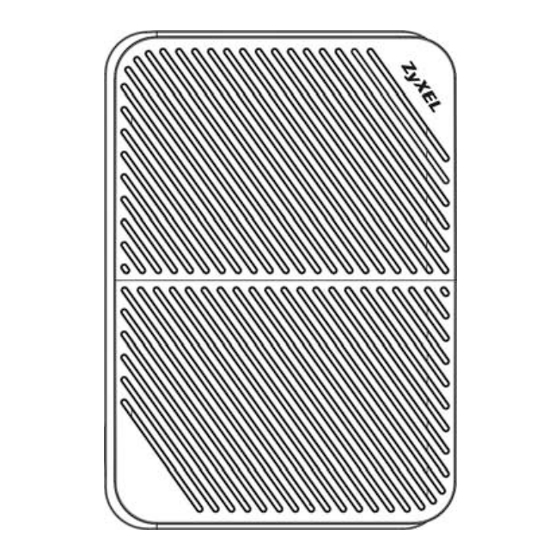
ZyXEL Communications P-660HN-51 - QUICK GUIDE V1.10 Quick Manual
802.11n wireless adsl2+ 4-port gateway
Hide thumbs
Also See for P-660HN-51 - QUICK GUIDE V1.10:
- User manual (310 pages) ,
- Quick start manual (12 pages) ,
- Datasheet (2 pages)
Table of Contents

Summary of Contents for ZyXEL Communications P-660HN-51 - QUICK GUIDE V1.10
- Page 1 P-660HN-51 802.11n Wireless ADSL2+ 4-port Gateway Firmware Version 1.10 Edition 1, 9/2010 DEFAULT LOGIN DETAILS IP Address: http://192.168.1.1 User Name: admin Password: 1234 Copyright 2010 ZyXEL Communications Corporation www.zyxel.com...
- Page 2 Device Panels POWER POWER LAN1-4 RESET INTERNET LAN PORT 1-4 WPS/WLAN DSL PORT...
- Page 3 P-660HN-51 Overview The P-660HN-51 is an ADSL2+ router with a four-port built-in Ethernet switch and IEEE 802.11n wireless capability. The P-660HN-51 allows wired and wireless clients to safely access the Internet. The built-in firewall blocks unauthorized access to your network. It supports other helpful features, including Quality of Service (QoS) which allows time- sensitive services and applications to flow more smoothly.
-
Page 4: Hardware Connections
Hardware Connections This section shows you how to set up your P-660HN-51. 1. DSL: Use a telephone cable to connect your P-660HN-51’s DSL port to a telephone jack (or to a splitter, if one is already installed). 2. LAN: Use an Ethernet cable to connect a computer to a LAN port for initial configuration and/or Internet access. -
Page 5: Set Up A Wireless Network
P-660HN-51 • The POWER light blinks while your P-660HN-51 starts up and then stays on once it is ready. The DSL light turns on when the P- 660HN-51 has a DSL connection. The WPS light turns on when the wireless LAN is ready. The INTERNET light turns on when the gateway is able to access the Internet and will blink when the P- 660HN-51 is sending or receiving data. -
Page 6: Log Into The Web Configurator
Log into the Web Configurator Your device may already be set up for Internet access. However, you may want or need to log on to the P-660HN-51 web configurator to perform tasks: • Configure your Internet access settings manually • Customize the Quality of Service (QoS) and routing features •... - Page 7 P-660HN-51 3. A welcome screen appears showing a summary of your last login. Select Show this page next time to see the welcome screen on your next login. Otherwise, deselect it. Click Continue. 4. The Network Map page appears. This shows whether the P-660HN- 51 and computers/devices connected to it have Internet access.
- Page 8 Click on Status to display the following screen, where you can view the P-660HN-51 device, interface and system information. 5. If the DSL light is turned off, manually configure the Internet connection Click Network Settings > Broadband, then click Add new WAN Interface.
- Page 9 P-660HN-51 Internet Account See the User’s Guide on the CD for all configuration details.
- Page 10 Using Wireless Protected Setup (WPS) If your wireless devices display the WPS logo, you can use Wi-Fi Protected Setup (WPS) to add wireless devices to your wireless network. If your wireless devices do not display the WPS logo, go to Set Up a Wireless Network on page to manually set up a wireless...
- Page 11 Viewing a Product’s Certifications 1. Go to www.zyxel.com. 2. Select your product from the drop-down list box on the ZyXEL home page to go to that product's page. 3. Select the certification you wish to view from this page.
-
Page 12: Fcc Statement
FCC Statement This device complies with part 15 of the FCC Rules. Operation is subject to the following two conditions: (1) This device may not cause harmful interference, and (2) this device must accept any interference received, including interference that may cause undesired operation.




Need help?
Do you have a question about the P-660HN-51 - QUICK GUIDE V1.10 and is the answer not in the manual?
Questions and answers